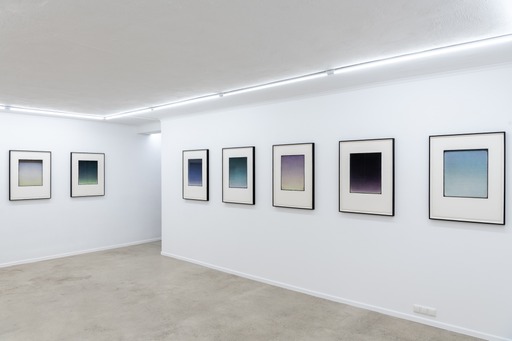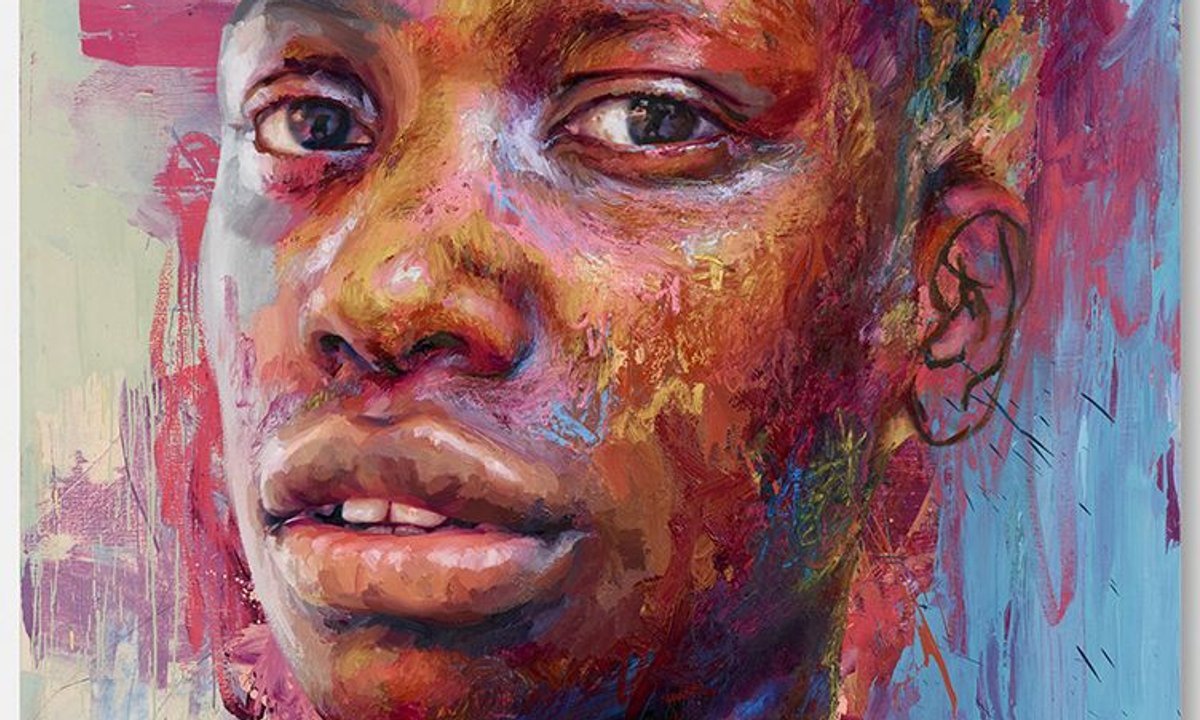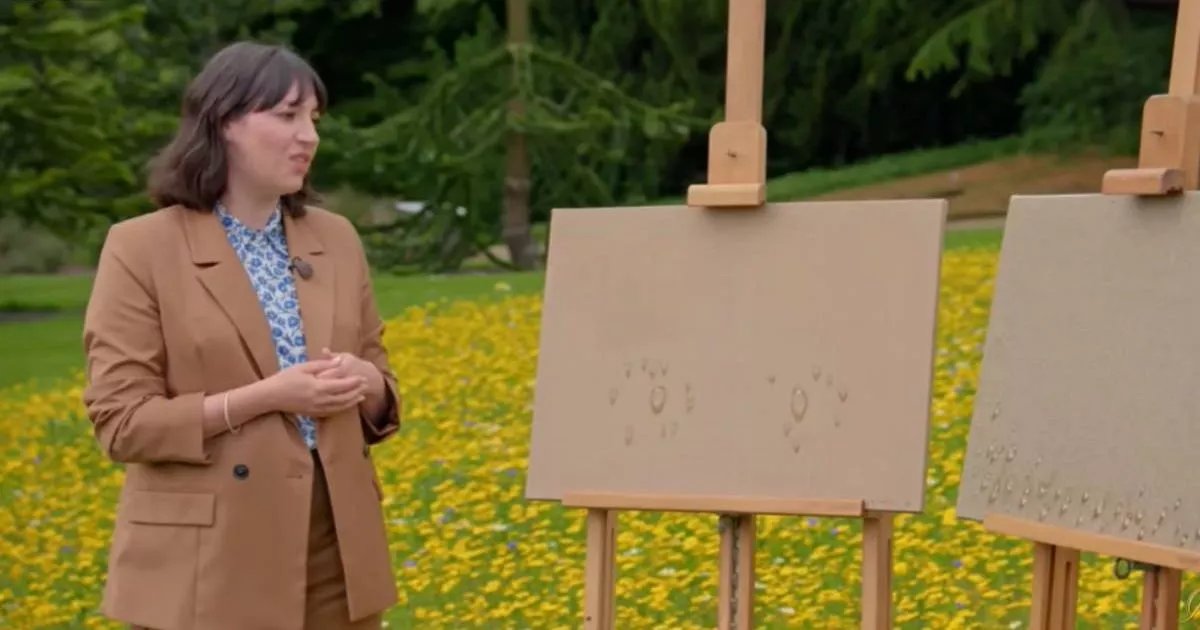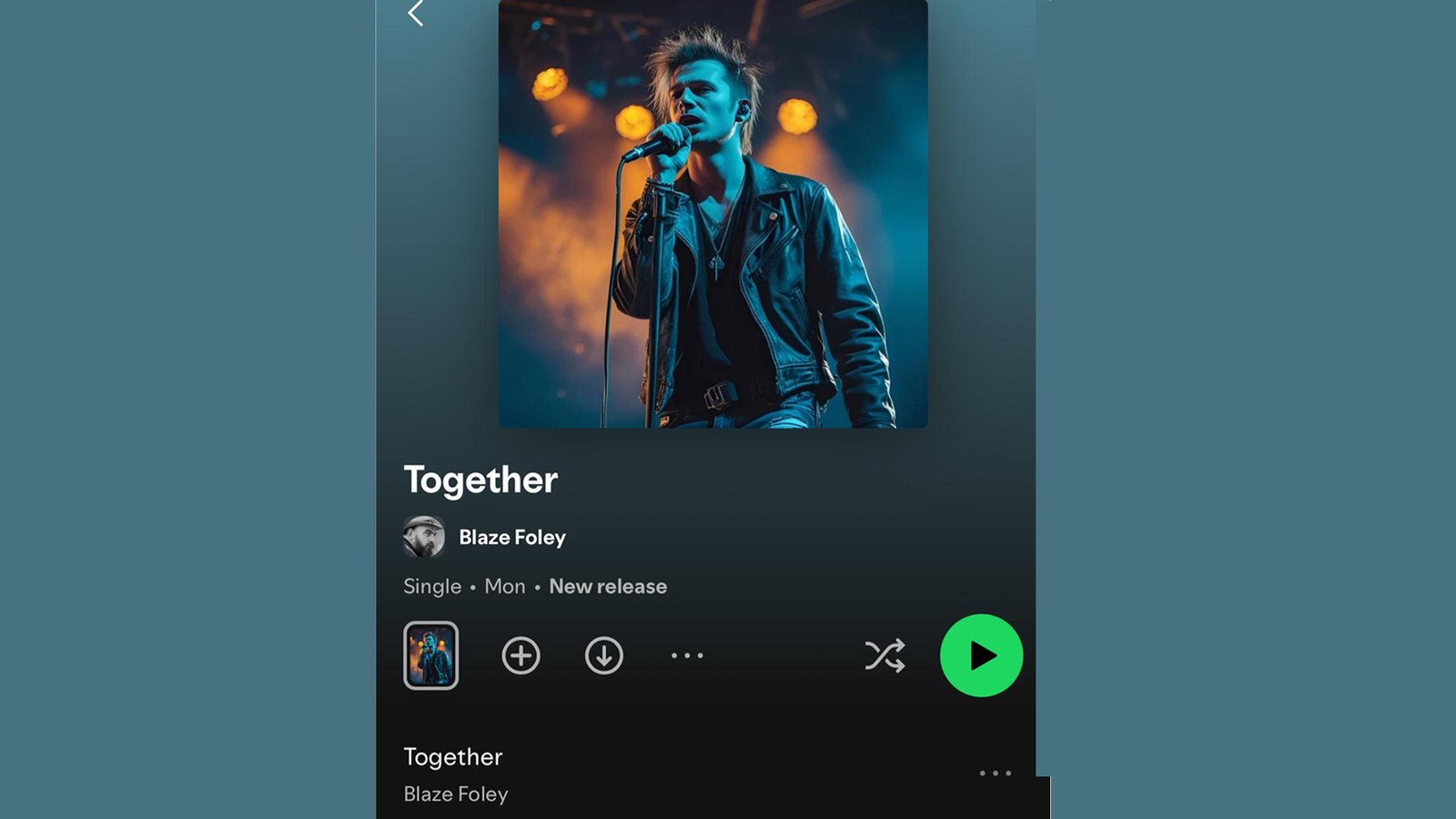April Dell (AD): The exhibition title – Distant Pictures – refers to the New Zealand films you chose as the theme for this group of works. Why films? And why these particular films?
Michael Dell (MD): As a visiting exhibiting artist, I wanted to bring something from Aotearoa New Zealand to Berlin, and Germany has such a rich history of filmmaking. The feature films I selected for the basis of the works in this exhibition are films that I felt reflected a brief history of contemporary New Zealand cinema.
Cinema is a treasure for anyone who has the opportunity to engage with it, and it can reflect a country’s history and culture while having that universal quality of storytelling. Distant Pictures was a very enjoyable project to work on – viewing a lot of movies and then making the selection.
AD: How do the films relate to your abstract imagery of color field gradients?
MD: The eight works in the show are based on the opening sequences from each selected film. Something that I want to evoke is the anticipation of watching the beginning of a movie. The colors in the gradients refer to a film still from a particular moment within the first minute or so of each film. The color also reflects a certain mood and feeling.
Drawing on cinema is sort of an extension of how I often use elements from analog photography, such as failed film negatives, in my work. I often use an overhead projector in my studio, where I project a transparency taken from a photograph on the wall to work from. As soon as the projector is turned on, even without an image on the screen, there is this wonderful beam of light contained within a frame. My abstract gradient paintings and drawings are really about that formlessness of light. To me it seemed relevant to connect that projected light in my studio to the projection of a film.

Installation view: Michael Dell, Solo exhibition, Distant Pictures. Ronewa Art Projects, Berlin. Image credit: Jeremy Knowles
AD: Tell me about your process for achieving the beautifully delicate blending of color and layering of materials in both your paintings and drawings.
MD: My work always seems to be grounded in the art making process. I try to achieve a richness and a heaviness of color, whether in my paintings or drawings, that visually sits deep within the work.
That process is about building up thin layers of color in paint or with charcoal and conté (compressed graphite mixed with clay). While I am layering those materials and building up a depth of color, I am also thinking about the fall of light, by creating tonal gradations from the removal and replacement of the layers.
AD: The exhibition works appear minimalist from afar but actually contain a lot of subtle texture and fine details, such as the edges and faint lines. What is contained in these details?
MD: The details you mention are often a byproduct from the making of the work, a result of the layering and the constant removal and adding of materials. I am also thinking about breaking the form and structure of the work down. By that, l mean subtly destroying the work and then rebuilding it within a framework of a strong edge, as you mention. So there is this residue that evolves and remains in the work that interests me – a residue that can only be achieved through that process of making a work.
AD: Green is a color you frequently work with and is present in several exhibition works. What is it about green that attracts you?
MD: That is an interesting question, one I often think about without really knowing the answer. I think it has to do with the green seen in nature, which reflects life itself.
AD: Your current practice seems divided into abstract works and landscapes. You’ve mentioned that you have a similar conceptual approach towards both of these modes. Can you explain this approach?
MD: The relationship between the two modes of work, subject and non-subject, is to do with materiality more than anything else. I feel that both types of work end up in the same place, really, as visual objects made from the same materials using the same applications – hopefully, this is what is on show when I present the two types together. Just as abstraction is more about the formal concerns and physical acts of picture making, so too is my approach towards my landscape work.
I also think there is often a banality or nothingness that can be found in certain landscapes that connects so well with abstraction.
Exhibition Date :
Michael Dell, Distant Pictures
June 21 – July 25, 2024
Ronewa Art Projects
Potsdamer Strasse 91
10785 Berlin
This interview is authored by April Dell, Gallery Manager, Press & Communications Ronewa Art Projects
Main Image: Portrait of Michael Dell at Ronewa Art Projects, 2024. Courtesy Ronewa Art Projects. Image credit- Jeremy Knowles






